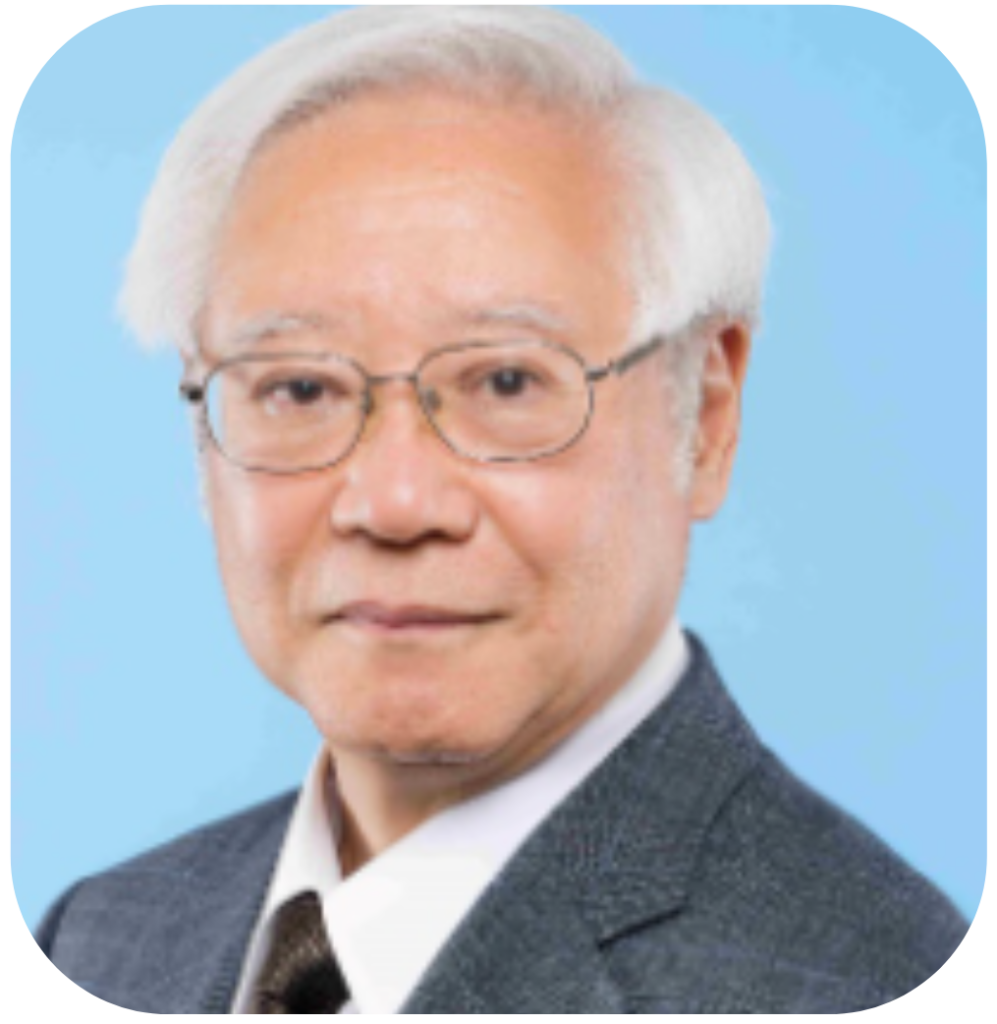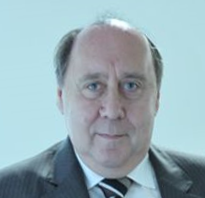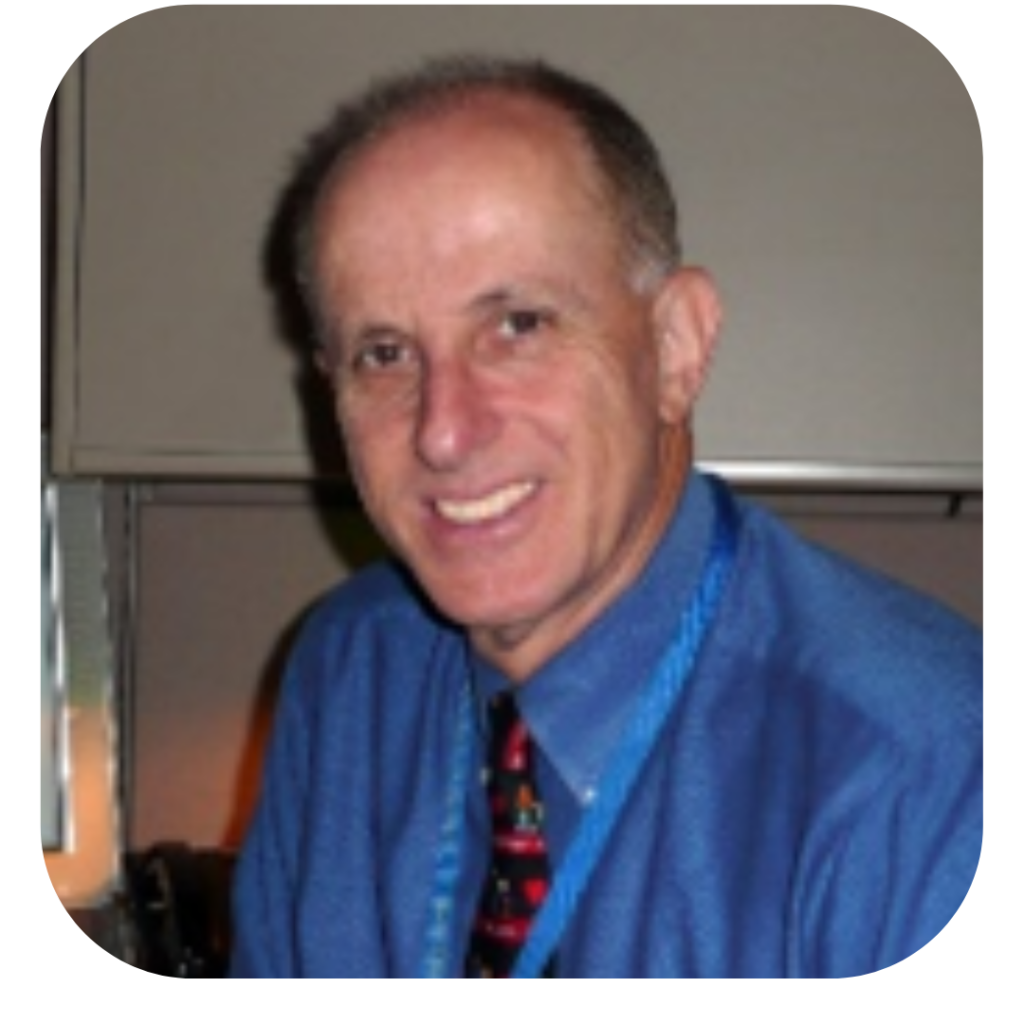KEYNOTES SPEAKERS

PhD. Hiroshi Iwai
International College of Semiconductor Technology
National Yang Ming Chiao Tung University
Hsinchu, Taiwan
Tokyo Institute of Technology, Japan
PhD. HIROSHI IWAI
BIOGRAPHY:
Hiroshi Iwai is a semiconductor device engineer who contributed to the development of LSI products and their technologies for 50 years since 1973 at Toshiba Corporation, Tokyo Institute of Technology, and National Yang Ming Chiao Tung University. He is an Eminent Lecturer of IEEE Electron Devices Society and a committee member of IEEE IRDS (International Roadmap for Devices and Systems).
Commencement of RF CMOS Technology Development for GSM and Bluetooth in the 1990s and recent technology status.

PhD. Edmundo A. Gutiérrez D.
General Director of the Mexico National Institute for Astrophysics, Optics and Electronics
Puebla, Mexico
PhD. Edmundo A. Gutiérrez D.
BIOGRAPHY:
Dr. Edmundo A. Gutiérrez D. got his PhD in 1993 from the Katholieke Universiteit Leuven (KUL) in Leuven, Belgium. The PhD work focused on the physics and electrical performance of submicron CMOS technologies for cryogenic applications. In 1993 was hired as a researcher at the Mexico National Institute for Astrophysics, Optics and Electronics (INAOE in Spanish). From 2000 to 2002 was in charge, as a Design Manager, of the Motorola Mexico Center for Semiconductor Technologies. From 2005 to 2006 was the Technical Director of the Intel Mexico Systems Research Center. Dr. Gutiérrez has published more than 160 scientific papers in international journals and conference proceedings, is author of two books, and has supervised 17 PhD thesis. He is Editor-In-Chief of IEEE Transactions on Device and Materials Reliability, Editor of IEEE Transactions on Electron Devices, IEEE Fellow member, and General Director of the Mexico National Institute for Astrophysics, Optics and Electronics.
INAOE: from the nanometer scale to light years
The Mexico National Institute for Astrophysics, Optics and Electronics’ “Dance at the edges of the universe” is a metaphor of the scientific research ability to link the universe scale with that of the nanometric electron devices. Observing the activity of the galaxies, such as the black holes, far in the light years distance requires the use of electron devices, such as infrared detectors or superconductor-based TeraHertz (Hz) detectors. In this talk I will describe the Mexico Large Millimeter Telescope (LMT) participation in the creation of the image of the black hole in the Milky Way, and the use of nano- and micro-meter electron devices used to read the radiation coming out of the universe, which is interpreted with a mathematical model to create the fabulous Black Hole.

PhD. MARTIN A. GREEN
Australian Centre for Advanced Photovoltaics, School of Photovoltaic and Renewable Energy Engineering.
PhD. MARTIN A. GREEN
BIOGRAPHY:
Martin Green is Scientific Professor at the University of New South Wales, Sydney and Director of the Australian Centre for Advanced Photovoltaics, involving five other Australian Universities and research groups. His group’s contributions to photovoltaics include inventing the PERC cell, now accounting for 90% of global production, and holding the silicon solar cell efficiency record for 30 of the last 38 years, regarded as a “Top Ten” milestone in solar photovoltaics history. Major international awards include the 1999 Australia Prize, the 2002 Right Livelihood Award, also known as the Alternative Nobel Prize, and most recently, the 2021 Japan Prize.
Recent Progress in Solar Photovoltaics
Over the last decade, the cost of photovoltaic solar energy conversion has dropped very dramatically with solar photovoltaics “now the cheapest source of electricity in most countries” and “now offering some of the lowest cost electricity ever seen”, according to the International Energy Agency. However, improvements are in the pipeline that are leading to an era of “insanely cheap” solar power, within the coming decade.
The scientific and industrial developments leading to these cost reductions will be described, as well as likely further technical progress leading to further cost reduction and installation volume growth over the coming decade.

PhD. COR CLAEYS
Fellow IEEE, Fellow ECS
Distinguished Lecturer IEEE EDS
Leuven, Belgium
PhD. COR CLAEYS
BIOGRAPHY:
Cor Claeys is Professor at the KU Leuven (Belgium) since 1990. He was with imec, Leuven, Belgium from 1984 till 2016. His main interests are semiconductor technology, device physics, low frequency noise phenomena, radiation effects and defect engineering. He teaches several short courses in different parts of the world. He co-edited books on “Low Temperature Electronics” and “Germanium-Based Technologies: From Materials to Devices” and wrote monographs on “Radiation Effects in Advanced Semiconductor Materials and Devices”, “Fundamental and Technological Aspects of Extended Defects in Germanium”, “Random Telegraph Signals in Semiconductor Devices” and “Metals in Silicon- and Germanium-Based Technologies: Origin, Characterization, Control and Electrical Impact”. He also (co)authored 16 book chapters, over 1200 conference presentations and more than 1400 technical. He is editor/co-editor of 70 Conference Proceedings. Prof. Claeys is a Fellow of the Electrochemical Society and of IEEE. He was EDS President in 2008-2009 and Division Director on the IEEE Board of Directors in 2012-2013. He is a recipient of the IEEE Third Millennium Medal and received the IEEE EDS Distinguished Service Award.
Evolution of Micro- and Nanoelectronics Devices for the Next Decade
The micro and nanoelectronics device evolution towards fully integration in our daily life has been driven by Moore’s law, requiring the use of novel materials, the development of novel processing schemes and the switch toward novel design concepts and device architectures. Semiconductors are everywhere, are essential to solve humanitarian challenges and are at the basis of innovative technologies such as AI.
Device architectures such as FinFETs, TFETs, Gate-All-Around, nanowires (NWs), nanosheets (NSs), CFET and Forksheet structures for logic and analog/RF building blocks enable System-on-Chip (SoC) applications. The strong progress achieved in silicon technology and heterogenous integration of Ge and III-V technologies on a silicon platform results in the on-chip integration of building blocks with different functionality. In addition, there is a commercial breakthrough of GaN devices, although dependent on the application competing with SiC. Major trends in process integration approaches are reviewed and technological challenges of some process modules and device structures highlighted.

PhD. LUIS KUN
FAIMBE, Life Fellow IEEE, FIAMBE, FIUPESM
PhD. LUIS KUN
BIOGRAPHY:
Dr. Kun graduated from the Merchant Marine Academy in Uruguay and holds a BSEE; MSEE and Ph.D. in BME from UCLA. He is a Distinguished Professor Emeritus of National Security Affairs (CHDS) and was a Professor of Homeland Security at the National Defense University (2003-2015). A (Lifetime) Fellow of the IEEE, the American Institute for Medical and Biological Engineering, the International Academy of Medical and Biological Engineering, and the International Union for Physical and Engineering Sciences in Medicine. He was the founding Editor in Chief of Springer’s Journal of Health and Technology 2010-2020. He spent 14 years at IBM and later as Director of Medical Systems Technology at Cedars Sinai Medical Center. As Senior IT Advisor to AHCPR he formulated the IT vision and was the lead staff for High Performance Computers and Communications program and Telehealth. In July 1997, as an invited speaker to the White House, he was primarily responsible for the first Telemedicine Homecare Legislation signed by President Clinton, in August 1997. While a Distinguished Fellow at the CDC, as Acting Chief IT Officer for the National Immunization Program he formulated their IT vision on 10/2000. Kun received many awards including: AIMBE’s first-ever Fellow Advocate Award in 2009; IEEE-USA Citation of Honor Award, “For exemplary contributions in the inception and implementation of a health care IT vision in the US.” 2011 Golden Core Award by the IEEE Computers. Named: “Profesor Honoris Causa” by Favaloro University, (2009); “Distinguished Visitor” by the City of Puebla, (Mexico 2013). He is/was an EEE Distinguished Lecturer for the Computer Society, Engineering in Medicine and Biology Society and Chairman for SSIT’s DL Program. Kun is an Honorary Professor of the Electrical Engineering Dept. at the School of Engineering of the University (UDELAR) in Montevideo, Uruguay. He received the Medal of Merit in 2016 in Mexico from the National Unit of Engineering Associations. He was named Visiting Professor by the National Technological University of Buenos Aires, Argentina, November 2017.
PANDEMICS, MIGRATION AND CLIMATE CHANGE: THE CHALLENGES OF MULTIPLE COMPLEX EMERGENCIES & LARGE SCALE DISASTERS
Thanks to many of the advancements in Science and Technology, life expectancy for the average person in the world has steadily increased from 2.5 billion in 1950 to over 8 billion by 2022. As individuals live longer, more chronic conditions manifest in their lifetimes, which translates in unsustainable increases in healthcare expenses, towards the end of life. Urban and suburban areas keep growing demographically and their population densities are becoming “hot spots” for the transmission of infectious diseases, that could decimate entire populations. Prevention is key to lowering the costs while improving quality of life. Urbanization and overpopulation have created huge amounts of garbage, not just plastics, but toxic waste, water, air and soil. According to the Lancet Commission on Pollution and Health the vast majority of the pollution deaths occur in poorer nations and in some, such as India, Chad and Madagascar, pollution causes a quarter of all deaths. It kills at least nine million people and costs trillions of dollars every year, and warns the crisis “threatens the continuing survival of human societies”. The effects of climate change create additional strains and challenges to our systems. Droughts, fires, (e.g., Australia 2019, California every year), and floods worldwide, not only affect agriculture and food production but the accelerated melting of existing glaciers has an impact on the availability of drinking water in critical and overpopulated areas around the world. In addition, rising land temperatures and rising sea levels are producing major migration problems to many nations. Climate change and global warming are two factors that society cannot ignore since the future conflicts will be caused by the availability of water, food, and energy, all required for human survival.